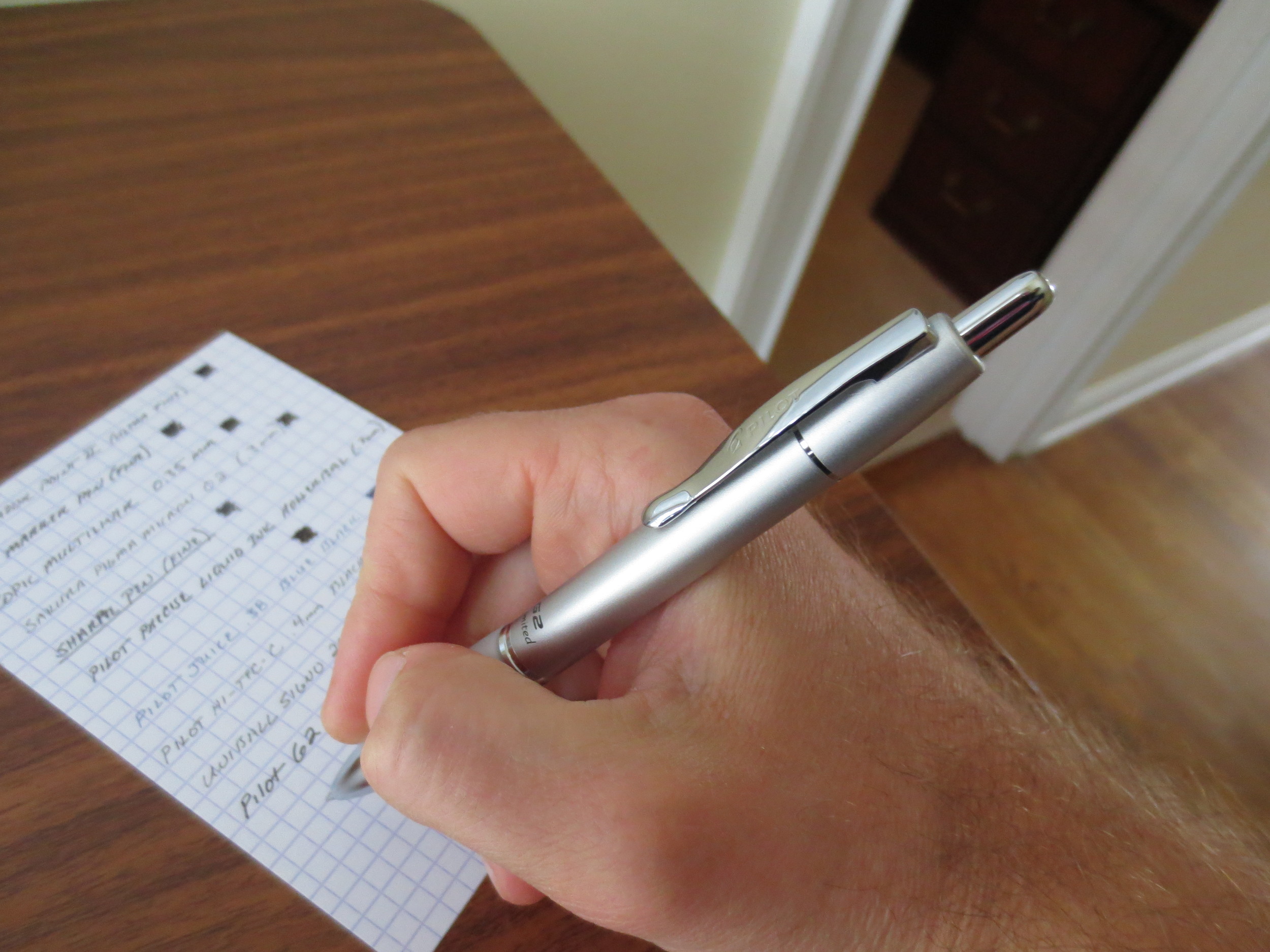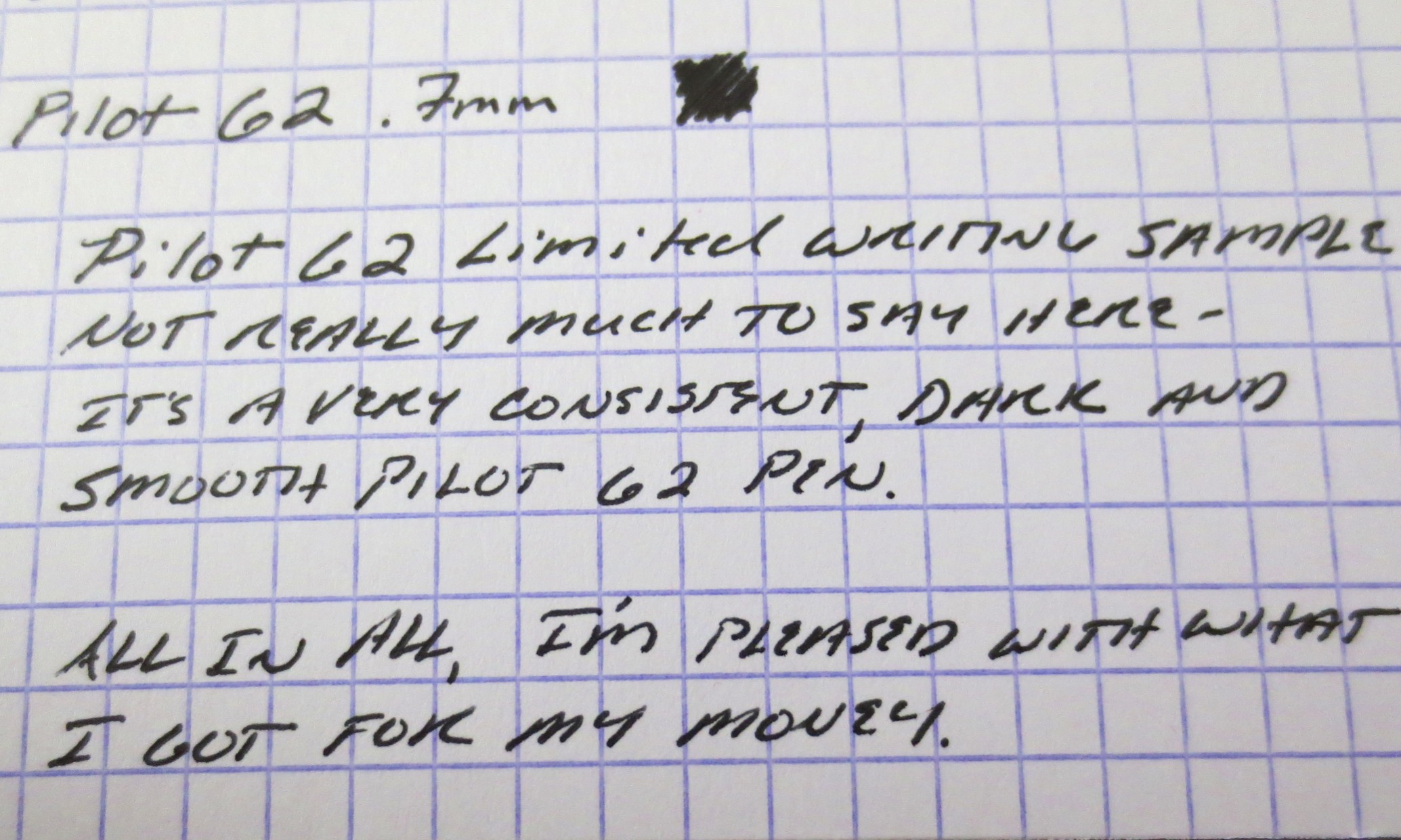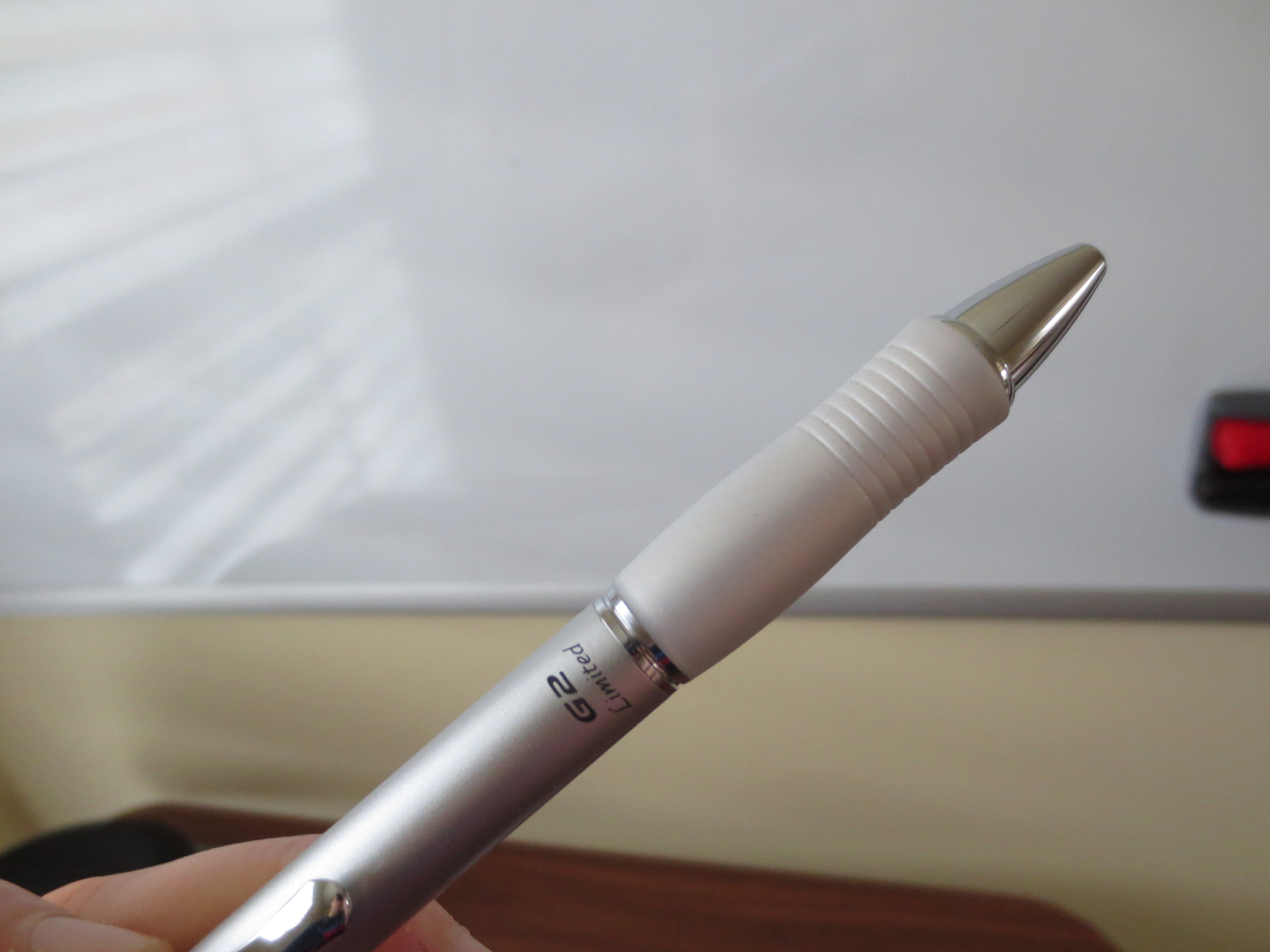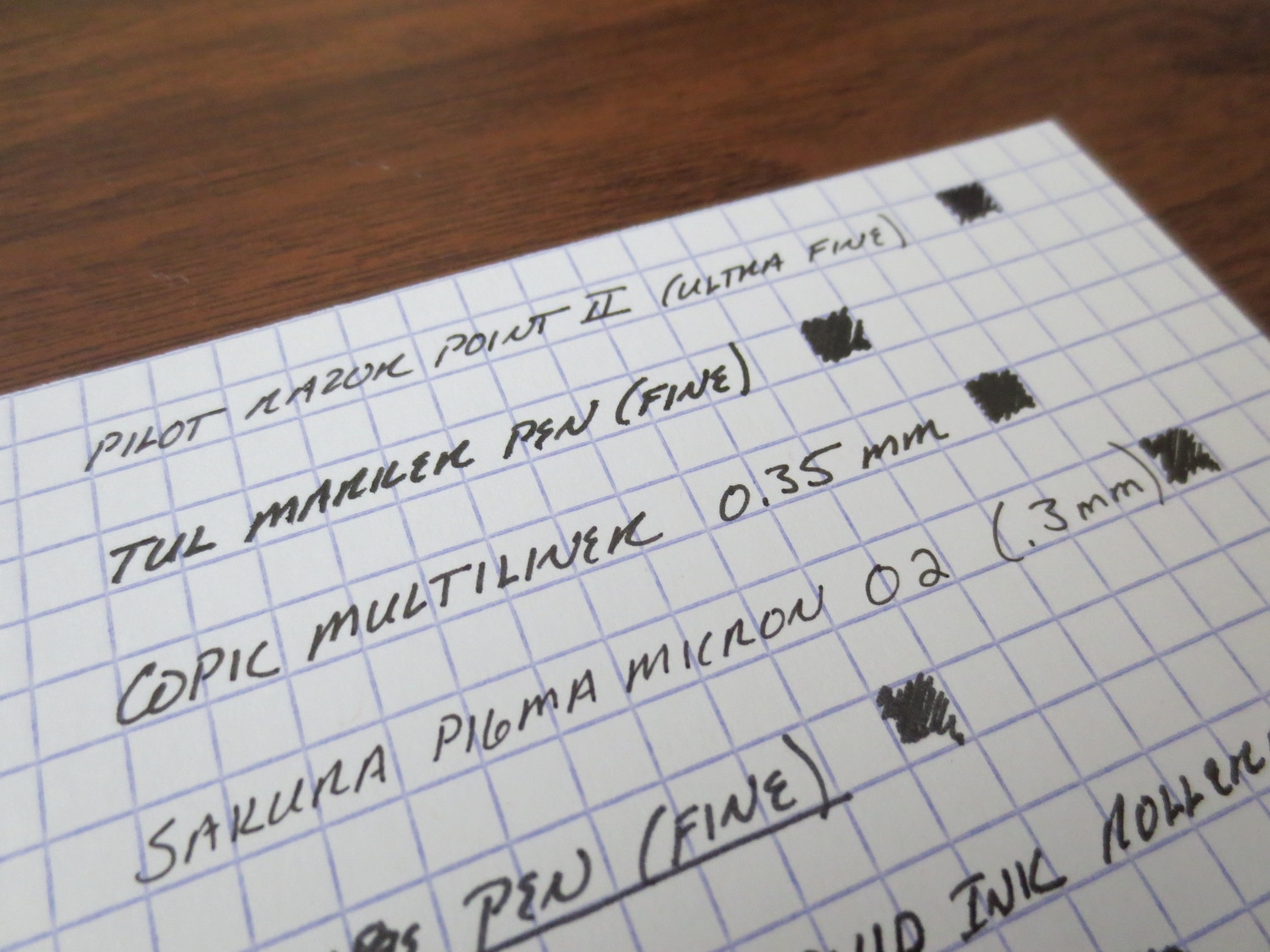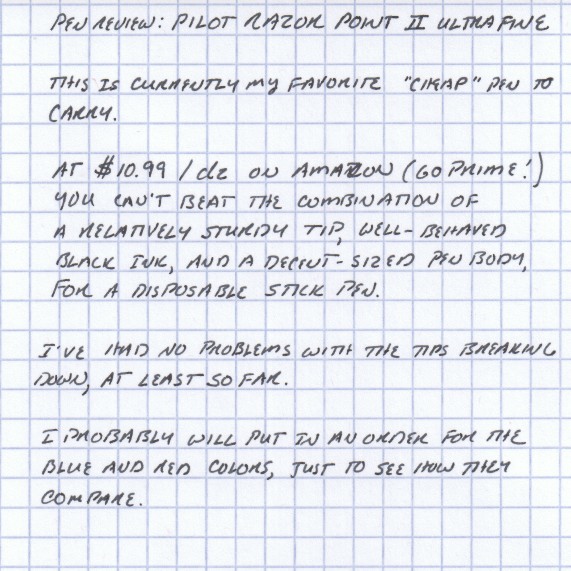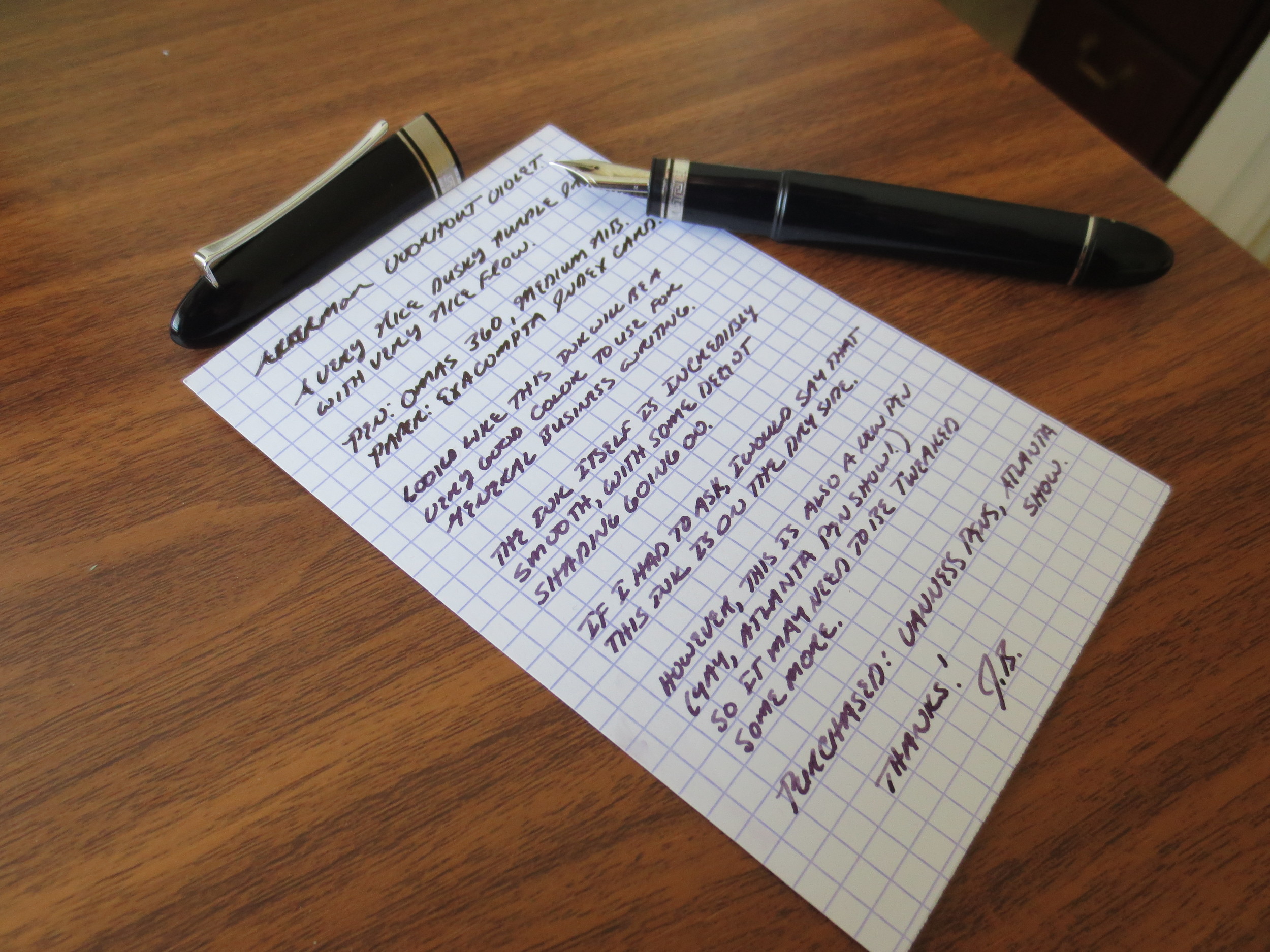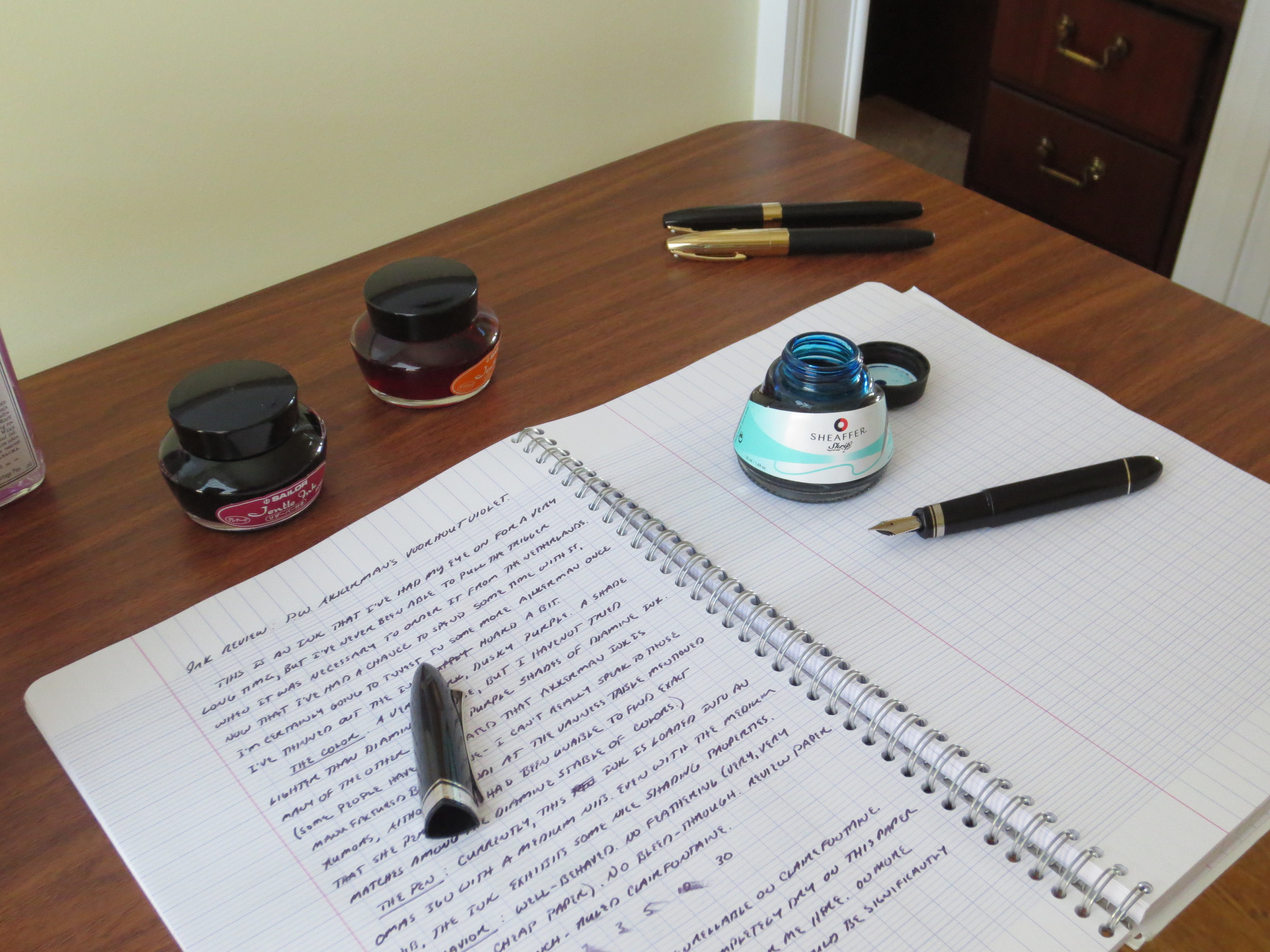I've been on a Pilot pen kick recently. Somewhere, somehow, I ended up with a "20% off your total purchase at Staples" coupon, so I drove to the mall a couple miles from my house intending to pick up another pack of Razor Points. Staples didn't have these, but I walked away with some new daily writers that I've been using regularly, including this Pilot G2 Limited.
The G2 Limited is intended to be the barrel "upgrade" for those who want something a step up from Pilot's stock G2 plastic pen. Sort of like the Pentel Energel "Alloy" model is to the run-of-the-mill Energel. Those are cool too. Staples was sold out.
Pilot advertises the G2 as the "#1 Selling Gel Pen," which may be self-promotion, but also may actually be true, since these pens are everywhere. Pilot has issued multiple renditions of the pen, including the "G2 Mini," the "G2 Pro," the "G2 Professional," and even a charity line that includes a breast-cancer fundraising edition. The model that caught my eye, however, was the silver G2 Limited, which I managed to score for about $8.50, after my discount.
Don't get me wrong, this is an $8 pen. It's made of plastic. There's some play in the joints where the parts fits together, but not enough to make it rattle, which is the point at which it would get annoying to me. The knock is pretty solid and retracts/unretracts the point without sticking or rattling. The pen comes with the .7mm G2 refill in black. I typically prefer the .5mm refill in blue (or even the "Ultra Fine" .38mm in either the G2 or Juice line), but I need a black pen at the moment and I've actually come to enjoy the .7mm. It's incredibly smooth, leaves a very dark line, and in a week of use, I have not seen any of the "blobbing" that people complain about with the .7mm point.
A comparison with some other common gel pens in .38mm, .4mm, and .5mm. I typically opt for a narrower line than the standard .7mm, but this line is clean enough that it's more than usable for me. Check out how dark that black ink is.
People may disagree with me on this, but the smoothness and darkness of Pilot's ink formulations continues to win me over every time. I prefer the G2 over the Uniball Signo 207 or the Zebra Sarasa, the Hi-Tec-C over the Signo DX, and the Pilot Precise over just about any other liquid ink rollerball on the market (although this last category's not really a hard one to win). On the fountain pen side, my Vanishing Point and Custom 74 are regularly inked with Iroshizuku or the Pilot/Namiki Blue-Black Cartridges. I think I made it through high school using the old Pilot Explorers. I have not managed to scavenge some Acroballs yet, but will do so in my next Jetpens order.
In this same run to Staples, I picked up a Dr. Grip Gel and a Dr. Grip Full Black, after hearing rumors that the line was being discontinued. The Dr. Grip Gel takes a G2 refill, so it may not warrant a separate review, but the Full Black has a hybrid ballpoint ink that I'm really liking at the moment and am using regularly. There will be some more Pilot reviews soon.
